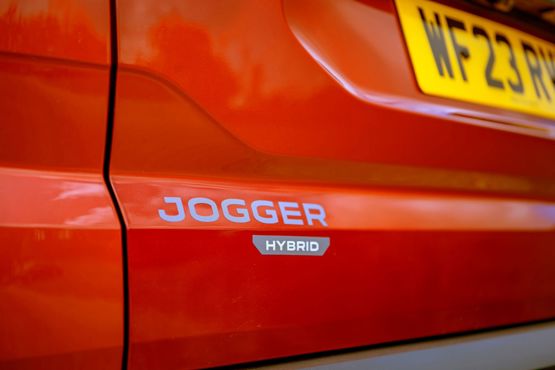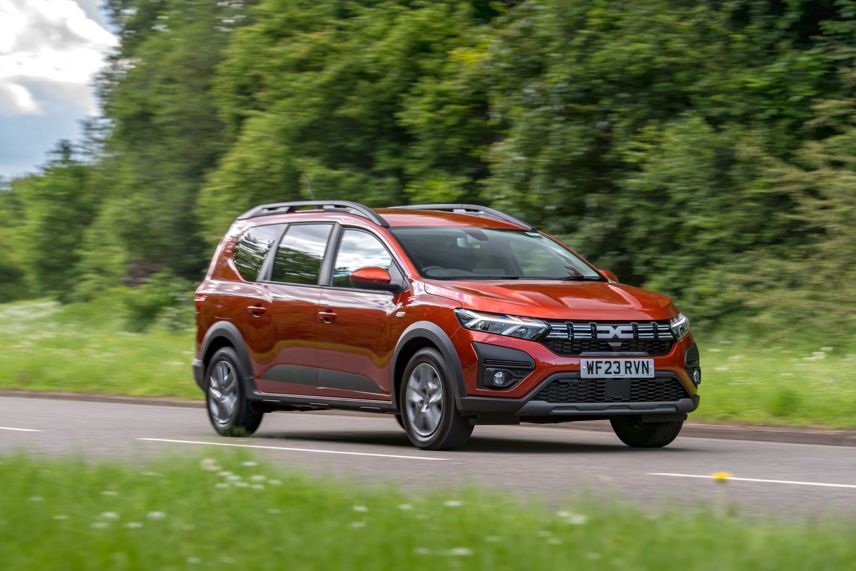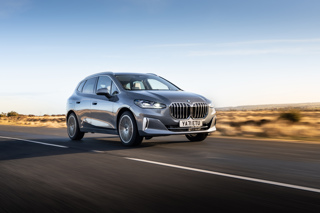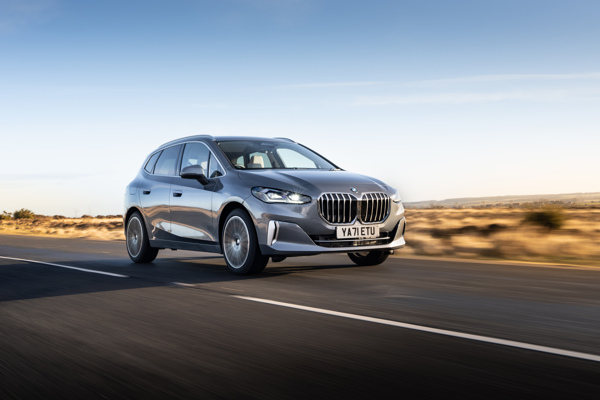Review
Just when you thought every conceivable automotive niche had been filled, Dacia came along with the Jogger and blurred the lines between an MPV, SUV and estate.
On the inside, it’s a large seven-seater, while on the outside it’s a compact estate car with some rugged-looking plastic cladding and a slightly-higher-than-normal roof line.
For Dacia, the Jogger is an important car. It elevates the brand away from the budget-focused compact models of its past and, for the first time, introduces an electrified powertrain.
It’s important to mention that the Jogger is based on the latest Renault CMF-B platform, which is also used for cars like the Clio and Captur, as well as the new Nissan Juke, rather than some archaic old underpinnings. It’s a good start as these cars are refined and engaging to drive, attributes that Dacia has struggled to fulfil in the past.
The chassis has been stretched, to fit in three rows of seats, but overall the Jogger remains slightly shorter than a VW Golf estate. With all the seats in place there’s a modest boot that grows significantly when the rear row is folded away or removed altogether.
At a starting price of around £18,000 the Jogger appears to be exceedingly good value, then. Especially when you consider that its closest rivals are all van-derived models and many of the more expensive seven-seat SUVs are next to useless when it comes to fitting anyone other than a small child in the rear-most seats. We were surprised to find that the Jogger can accommodate a six-foot adult in the third-row, if required.
The car is offered with two powertrains. The first is a 1.0-litre three-cylinder petrol unit (TCe) that develops 110PS and emits 130g/km. The second is a 1.6-litre hybrid, borrowed from Renault, that serves up 140PS and emits 118g/km.

The hybrid is the more fuel efficient choice and it comes with an automatic transmission, while the TCe is paired with a six-speed manual.
Prices for the hybrid start at £22,995, which means company car tax bills are about the same regardless of which engine you choose.
The TCe is gutsy and characterful, offering the more engaging driving experience of the two. We’d expect around 48mpg in the real-world from the powertrain.
In the hybrid, there’s a greater degree of refinement with the ability to move away from rest using electric power alone. When the petrol engine fires up there’s little drama. We’ve been critical of this powertrain in the past, when testing the Renault Arkana Hybrid, but in the Jogger it seems as if a lot of the issues have been ironed out. The automatic gearbox is overtly complex, using a combination of six ratios for the engine and two for the electric motor, but no clutch or torque converter. It makes for slow shifts when you’re trying to hurry the car along, but in normal driving its largely unnoticeable.
During our test we saw north of 50mpg on a mix of country roads and dual carriageways and Dacia says the car will operate in zero-emission mode for up to 80% of the time in the city.
With its streched platfrom and soft suspension, the Jogger glides over rough roads and remains composed at motorway speeds.
The Jogger is offered in three trim grades, with a focus on offering essential equipment and value for money. The entry-level Essential, which is only available with the TCe engine, features air con, cruise control and parking sensors. There’s no infotainment screen, though, just a basic radio with Bluetooth connectivity and a smartphone holder.
The Essential comes with an eight-inch touchscreen for Apple Carplay and Android Auto, a reversing camera, keyless entry and blind spot monitoring.
At the top of the range, Extreme models are equipped with heated seats, sat-nav and alloy wheels.
From a safety perspective, the Jogger received a disappointing one-star rating from Euro NCAP when it was tested last year. In reality, its occupant protection score of 70% was reasonable - the Ford Puma managed just 75% - and it was a lack of safety technology that pulled its score down. Six airbags and AEB is fitted across the line up.
The Jogger presents as a ‘cheap and cheerful’ proposition, but it’s much more than that in practice. The space, comfort and drivability elevate it above a number of rival models, all of which are more expensive, while the brand’s renewed approach to providing value rather that just a bargain-basement price raises its appeal among fleet user choosers.








 Petrol Hybrid
Petrol Hybrid












